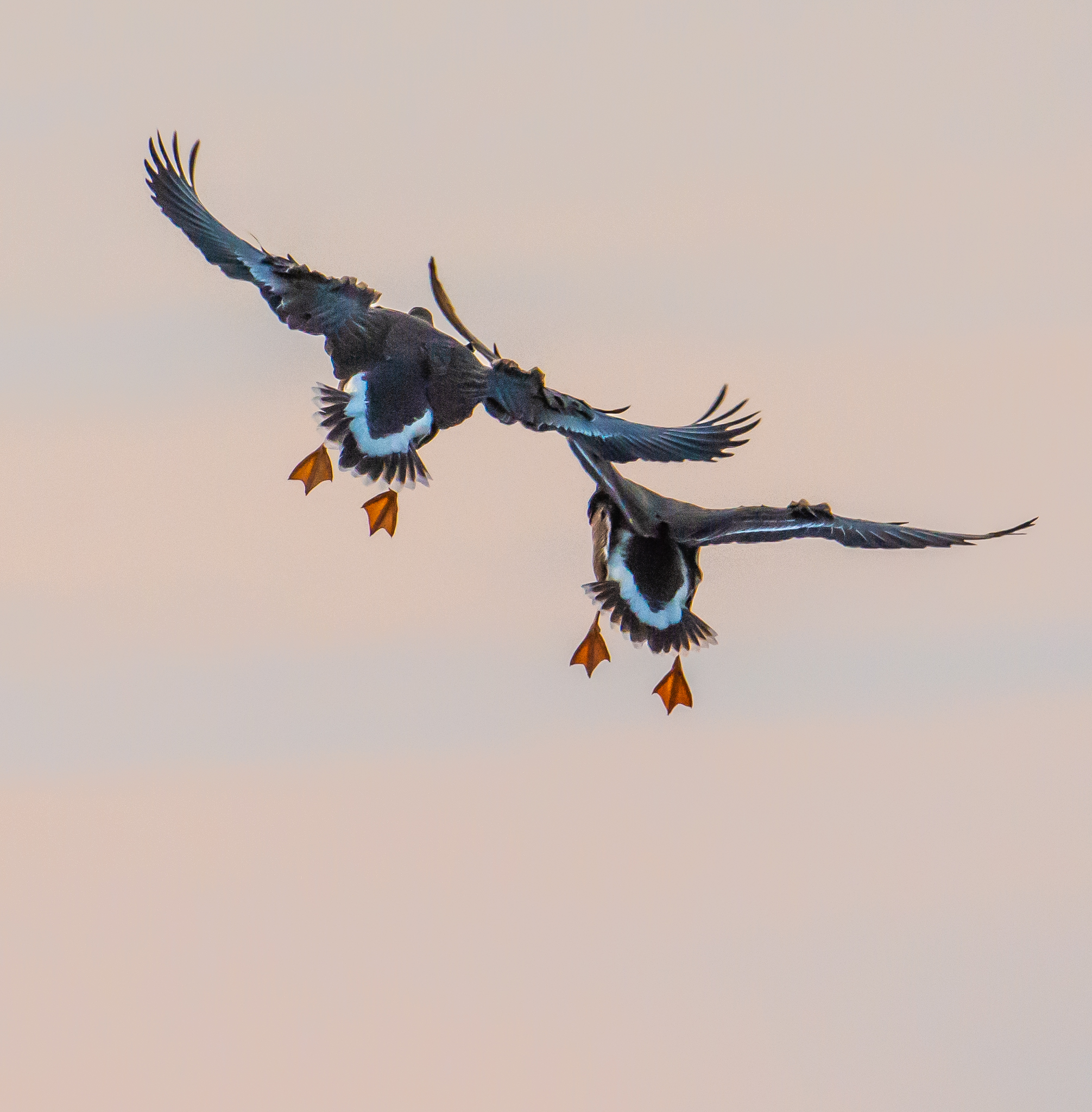By Kathy Howard
 We tend to think of birds as very similar, but according to Eddie Bartley, they can be as different from each other as a giraffe is from a mouse. Bartley is a docent at the Golden Gate Raptor Observatory in Marin and teaches Master Birder classes in migration at the California Academy of Sciences.
We tend to think of birds as very similar, but according to Eddie Bartley, they can be as different from each other as a giraffe is from a mouse. Bartley is a docent at the Golden Gate Raptor Observatory in Marin and teaches Master Birder classes in migration at the California Academy of Sciences.
This difference in bird species is especially true when it comes to migration, a stressful and risky venture for birds. We still need to learn a lot about the how and why of migration. We can deduce that the birds are searching for plentiful food, for a climate conducive to raising young, and for safety from predators. Overall, birds are like people — they are looking for a good income and a safe neighborhood in which to raise the kids.
There are many kinds of bird migration, and the type of migration can even vary within a species. Some birds migrate thousands of miles and others just hop over to a nearby nesting area. However, within a given species there is a typical pattern. According to Bartley, "Every species has its own story."
For example, the Orange-crowned Warbler lives high in the Sierras in the summer and drops down in elevation in the winter. This is an example of elevation migration — birds moving uphill and downhill, according to the season.
The delightful Sooty Fox Sparrow is a mid-distance traveler. The mid-distance migrants can move from southern Alaska to British Columbia or even as far as the Bay Area.
The neo-tropical migrants, such as the North American Warblers, can move from the northern boreal forests and tundra to Central America or even South America. Wilson's Warbler breeds in the Bay Area and then journeys to Mexico for the winter.
Swainson's Hawks breed in Northern California and then fly off to Argentina for the winter.
Some birds don't migrate. They are the permanent residents or sedentary birds. The California Towhee likes to hang out around home, as does the Wrentit. In fact, the Wrentit is such a couch potato that it rarely travels more than a mile from where it first fledged.
Although migration is stressful, not migrating can also present survival problems for a species. At one time, Wrentits were common in San Francisco. They have since been almost eliminated from the City (or extirpated, in bird lingo) due to loss of their preferred habitat.
Some birds within the same species migrate differently from each other. Our Anna's Hummingbird can be seen zooming around San Francisco year-round, but some Anna's fly off to winter in the desert and then return to San Francisco in the summer. Other Anna's breed high in the Sierras and drop down to the desert in winter.
And then there is post-breeding dispersal. It is not really a migration but rather the kids moving out of the house to find a new place to live, court, and produce grand-birds. They won't return home, to live in that spare room. Many raptors raised in Northern California end up dining on rodents in the Salinas Valley for their first winter and fan out from there to find new territory.
And some birds are either independent minded or just get lost, usually in their first year. They are the vagrants. These are the birds you read about in the newspaper, with photos of large groups (flocks?) of people with giant, long-lens cameras gathering for a glimpse of the bird of a lifetime. Vagrants may act as pioneers, looking for a new home to extend the range of their species.
If you like looking at birds, San Francisco is the place to be. The Bay Area is located along the Pacific Flyway, a major north-south migratory route extending from the Arctic tundra to South America. According to Bartley, almost one-half of all species of birds in the United States have been seen in San Francisco.
Many birds raise their young here in the spring and summer, and so autumn is when we have the most birds. Sadly, the first winter for young birds is when they are most likely to expire. Some species have only a 30% survival rate! They are lost over the winter mainly due to starvation, predation, and disease.
You can help the birds who are just passing through on their arduous journeys as well as those who stay for the winter (or the summer). Bartley advises that you can "paint your garden" with birds by growing those plants that attract the birds that you want to see. Keep your house cat indoors (better for the cat, too), provide fresh water, keep your bird feeder clean to prevent the spread of disease, and don't use rodenticides, herbicides, or pesticides. Songbirds, in particular, rely on insects. As Bartley says, "They don't call them flycatchers because they eat fruit."
Support legislation on "bird-safe" windows and the Lights Out for Birds campaigns. Many birds navigate by the stars, and artificial light can be a big problem for them. And the crows — how do they fly? Well, according to the Cornell bird website, some migrate, some are resident, and sometimes both behaviors take place in one population of crows.
Want to learn more? Both migrating raptors and the raptor dispersal can be seen from the Golden Gate Raptor Observatory in Marin, which hosts birdwatching during the migration seasons (parksconservancy.org/programs/ggro). You can reach Eddie Bartley at eddie@naturetrip.com.
Kathy Howard is a member of the Executive Committee of the Sierra Club's San Francisco Group. Special thanks to the Castro Courier and Westside Observer.
Photo of white-fronted geese by Michael Reinhart